- Home
- Trevor Hoyle
Earth Cult Page 3
Earth Cult Read online
Page 3
Professor Friedmann shook his head and indicated a foot-high pile of computer printout folded concertina-fashion on his desk. ‘There’s our latest batch of data, three weeks’ D and D processed and analysed by computer. No surprises there I’m sorry to say.’
‘D and D?’ Frank said, flipping open his notebook.
‘Ah, yes. You’re obviously not well-up in neutrino terminology.’ He cleared his throat and nodded, smiling gently. ‘Detection and Differentiation. It’s a two-stage process whereby we have to observe the various particle interactions in the tanks and then interpret and classify each one. There are random events happening all the while, as I’m sure you’ll appreciate, so it’s essential to differentiate those from the neutrino interactions.’
‘The crucial factor being the rate and frequency at which chlorine-37 is transformed into argon-37.’
Professor Friedmann’s smile faded at the edges. ‘Then you do know something about neutrino detection?’ He blinked behind his blue-tinted glasses and pinched his nostrils together with thumb and forefinger.
‘Something,’ Frank agreed. ‘Not a great deal.’
He had always found it best to underplay his hand in matters of scientific knowledge: in this way scientists tended to be more forthcoming and sometimes revealed information they otherwise might not have done.
‘Well, as you may know, Mr Kersh, our principal concern at Deep Hole is to detect and measure the number of neutrinos being emitted by the Sun’s core. These are formed during the fusion of hydrogen to helium. It’s been accurately estimated that during this process the Sun loses 4,600,000 tons of mass each second, which represents about 0-71 of the total mass of hydrogen being fused to helium, and from that we know that the total number of hydrogen nuclei being fused every second in the Sun is 3-6 × 1038 – or if you want it in round figures, 360,000,000,000,000,000,000,000,000,000,000,000,000.’
His eyes narrowed behind the blue lenses, a mannerism which reminded Frank of a schoolmaster making sure his pupil had grasped what he was being taught.
‘And from this we can estimate the number of neutrinos being produced each second in the Sun’s core at 1.8 × 1038, or in other words, 180,000,000,000,000,000,000,000,000,000,000,000,000. Unlike photons, the particles of light and heat formed in the core, which take about a million years to reach the surface, the neutrino takes three seconds, and travelling at the speed of light reaches the Earth in eight minutes. Because it has no mass and no charge it passes through the Earth as if it were a cloud of gas, in about 1/125 of a second, and carries on into space. But very occasionally a neutrino will react with an atom of chlorine and this absorption forms argon atoms which, being radioactive, we can detect with our equipment.’
‘Is it known how many neutrinos reach the Earth from the Sun’s core?’
Professor Friedmann nodded. ‘Oh yes, quite a simple calculation. Every second the Earth receives 80,000,000,000,000,000,000,000,000,000 neutrinos from the Sun. Every square centimetre of the Earth’s cross-section receives about sixty billion neutrinos each second.’ He smiled briefly. ‘It’s quite interesting to note that every second of the day and night we are being bombarded by several billion neutrinos which pass clean through us as if we didn’t exist.’
‘Perhaps just as well,’ Frank said. ‘I’d hate to think of what might happen if they decided to interact with some of my atoms.’
‘Not possible,’ Professor Friedmann said shortly, as if taking Frank’s comment seriously. ‘There’s no evidence at all to suggest that neutrinos in any way affect human beings.’
He went on to talk about the processing of data, which Frank was surprised to learn was carried out by the computer facility at NORAD, the North American Air Defense Command which was situated inside Cheyenne Mountain, about sixty miles away, south of Colorado Springs. The NORAD Combat Operations Center was built inside the mountain itself, under a granite roof a quarter-mile thick and behind 30-ton blastproof doors.
‘I assumed their computer time would be fully taken up with their own data processing requirements,’ Frank said.
‘They have three systems, two of which are on-line at any one moment, so they have spare capacity available which we’re free to use.’
‘And these are the data you’ve just received,’ Frank said, reaching for the printout.
Professor Friedmann laid his hand on the pile. ‘Yet to be checked and verified,’ he said. ‘But you can take my word that there’s nothing out of the ordinary here. Our present detection rate is one neutrino a month, which is consistent with other findings to date.’
‘One neutrino out of 60 billion per square centimetre – wouldn’t you expect more?’
‘Well, yes, we would,’ Professor Friedmann admitted. He stood up, seeming rather agitated. ‘We can only assume that our methods are nowhere near as efficient as they ought to be. I take it you’d like to see the installation for yourself, Mr Kersh. You’ll excuse me if I don’t accompany you, but my assistant, Dr Leach, is already below ground and he’ll be happy to answer any questions you might have.’
Frank took this to be a polite way of terminating the interview. It seemed that while Friedmann was quite willing to discuss the theoretical background to solar neutrino detection he was reluctant to go into specific details concerning the Project’s research programme and its record of success – or lack of it. Perhaps he was afraid that the US Institute of Astrophysics would reduce the budget or cancel it altogether if word got around that the detection rate was a single paltry neutrino every thirty days.
The cage was a solid aluminium box without windows, large enough to accommodate a dozen people, and dropping down a mile-deep shaft at twenty-two feet per second gave Frank the unnerving feeling of being in free fall. When they reached the bottom it took him several moments to regain his composure and recover his stomach, which had followed at a more sedate pace. The young technical assistant who accompanied him ducked his head aside and grinned, enjoying the expression on Frank’s face; Frank debated with himself whether he should throw up as well, just to make the young man’s day.
As he stepped out his breath was literally taken away. There was a steady warm breeze blowing in his face which was tainted with the smell of diesel oil and something more pungent that he couldn’t identify. Except for the powerful odour it might have been a warm summer wind blowing along the main tunnel. He said:
‘Air conditioning?’ and the technical assistant nodded, sliding the aluminium door shut behind him.
‘The air’s so sluggish down here we’ve got to keep a fresh supply coming in and constantly on the move. And it helps to clear the stink of the solution.’
‘That’s right. You’ve got a lot of perchloroethylene down here.’
‘Four tanks each containing 150,000 gallons of the stuff. Any spots or stains you want cleaning off?’
This was a reference to the other more common use of perchloroethylene – as a dry-cleaning fluid. It was exactly the same chemical composition as the fluid which could be bought in any hardware store, the important thing being that it contained two carbon atoms and four chlorine atoms, the chlorine absorbing a neutrino to become an argon atom.
The neutrino really was a ghost particle. Its name derived from the Italian neutrino, meaning ‘little neutral one’, proposed by the Italian physicist Enrico Fermi. The existence of such a particle had been postulated back in the thirties by Wolfgang Pauli to maintain the laws of the conservation of energy, but it wasn’t till the mid-fifties that specific experimental evidence was forthcoming that the particle had actually been detected. And its elusiveness wasn’t all that surprising when you considered that, on average, a neutrino would have to travel through 3,500 light-years of solid matter – something as dense as lead – before hitting and interacting with another particle. So even allowing for the fact that billions and billions of neutrinos were passing through the Earth every second it perhaps wasn’t to be wondered at that an infinitesimal percentage of them was detected in the
tanks.
Yet if this were so, why was Friedmann unhappy about discussing his results in detail? Had he discovered fresh evidence about solar neutrinos that he was unwilling to reveal, or was he trying to hide a paucity of hard factual data with bland assurances that the detection rate was ‘consistent with other findings to date’? Frank Kersh couldn’t figure it out; it was a tiny yet irritating puzzle whose solution eluded him.
They rode in a small fibre-glass cab along an electrified track, moving at a steady fifteen miles an hour down the main illuminated gallery before turning into a smaller, darker tunnel which seemed to curve and descend deeper, though it was difficult to estimate distance and orientation because there were no points of reference with which to judge their progress. The tunnel became narrower still, the two powerful lights mounted on the roof of the cab probing the blank walls ahead, and it seemed to Frank that they had travelled a considerable distance. He asked the technical engineer which direction they were heading in and how much further they had to go.
‘Nearly two miles from the shaft to the installation, which is slap-bang under the mountain. So you’re not only a mile underground, you’ve got another 14,000 feet of solid rock on top of that. That way the Professor figures we screen out most of the background radiation – gamma rays, X-rays and so on – and anything that gets through all that can only be our little elusive friend.’
Frank stared ahead into the twin circles of light bouncing against the roof and walls. On the floor of the tunnel he could see reflected the single steel track, like a smooth shiny metal ribbon vanishing into the blackness.
He said, ‘How many people do you have working on the Project?’
‘Upwards of twenty. There are eighteen of us in the research team, including the Professor and Dr Leach, and half a dozen engineers who look after the mine and see that the winding gear is properly maintained.’
‘No women?’
The technical assistant shook his head ruefully. ‘No women.’
‘What’s your function?’
‘I work with Dr Leach. He’s in charge of the detection equipment underground, so we operate a shift rota with four men permanently on duty. Gets to be pretty boring except for once a week when we flush the tanks with helium; that’s to collect any argon-37 present which we then run a radioactive count on.’
‘And how’s it been going?’
The technical assistant turned his head and looked directly at him. Frank thought for a moment that he wasn’t going to answer, but then he said, ‘Didn’t Professor Friedmann give you the figures?’
‘He said there were no surprises.’
‘That’s it,’ said the technical assistant, looking ahead once more. ‘No surprises.’
The tunnel opened out and Frank was momentarily dazzled by a bank of lights in the roof of an enormous chamber, as wide and high as the main hall at Grand Central Station. Four huge stainless steel tanks about twenty feet high were cemented into the floor, arranged in line one after the other, a series of silver-coated pipes connecting them and running into what appeared to be a filtration apparatus mounted on a concrete base. The smell of perchloroethylene was very strong now, stinging the nostrils and making Frank’s eyes fill with moisture.
The technical assistant laughed. ‘You get used to it after a while. And it sure clears up any sinus trouble you might have.’
Frank sneezed and wiped his eyes. He was beginning to find the technical assistant’s sense of humour a little wearing.
The cab had halted in a siding and they climbed out and walked past the tanks to a two-storey steel gantry where three men were sitting within an arrangement of consoles and instrumentation, elevated above the floor of the cavern. Two of the men were fairly young, in their twenties; the third was older, Frank presumed, though it was difficult to tell; he was a dwarf.
As they reached the top of the metal stairway the technical assistant said in an undertone, ‘Dr Leach isn’t too sociable. He doesn’t think visitors should be allowed down here. So I’d be careful what I ask him if I were you.’
It was oppressively warm and Frank was sweating. The breeze was gentler here than in the tunnels and the humidity very high, the body perspiring while at rest without even expending any effort.
The technical assistant introduced Mr Kersh from Science Now and Dr Leach’s bulbous eyes passed hurriedly and rather impatiently across Frank’s face, seeming to take him in and dismiss him in a single brief glance. He didn’t offer his hand but said at once in a voice that was low and throaty, almost a growl, ‘We’re extremely busy, I hope Professor Friedmann told you that. We haven’t got time to answer journalists’ questions when we’re conducting important scientific research.’
He crouched rather than sat on the chair, his feet not touching the floor, and there was something even more strange about him that Frank at first didn’t comprehend: then he realized what it was: although his head and shoulders and arms were those of a normal-sized man the rest of his body appeared to have shrunk or wasted away so that his deformity was made even more grotesque by the ungainly joining of ill-matched parts. He was half-man, half-dwarf, the cruellest of nature’s jokes in combining odd bits and pieces left over from other human beings.
Frank said, ‘I’ll try not to take up too much of your time, Dr Leach. But if I might correct you on one point: I’m a science writer, not a journalist.’
‘Is that a camera you’ve got there?’ Dr Leach said pettishly. ‘You’re not to take any photographs, I hope that’s clearly understood.’
‘Professor Friedmann raised no objection.’
‘Professor Friedmann isn’t in charge of the installation; I am. The Professor is Project leader but I’m responsible for everything below ground.’
Frank nodded slowly. ‘I see.’
He also saw that he wasn’t going to impress Dr Leach with his charm, tact and good manners. The man had made up his mind and there didn’t appear to be much hope of changing it; in any case Frank didn’t feel too strong an inclination to try. It seemed that the scientists on the Deep Hole Project had buried themselves out of sight of civilization in more than just the geographical sense.
‘Did you bring the photographic plates with you, Fawbert?’ Dr Leach said, addressing the technical assistant.
‘Williams is bringing them down on the second period.’
‘I wanted them for midday,’ Dr Leach said, swivelling round on his chair. ‘I expressly asked for them to be brought down within the hour.’ He gripped the arms of the chair, his hands large and heavily veined, covered in dark hair, and levered himself to the floor. The top of his head came no higher than Frank’s chest. ‘You’ll have to return to the surface and get them.’
He went across to a bank of instrumentation and walked along looking closely at each dial, which were level with his face. Frank was reminded of a surly precocious child examining a birthday train set to ensure that all the parts were in good working order.
Fawbert released a small sigh and glanced at one of the other technicians. The man shrugged and made a face.
Frank thought: One big happy family. Seven Snow Whites and one …
He unslung his camera and cassette recorder and went to stand at the rail, the huge rectangular stainless steel tanks seen in acute perspective from this vantage point. High above in the roof of the chamber the battery of lights illuminated everything with a harsh bleakness, like a football stadium at night. At his elbow Fawbert said quietly:
‘I did mention there might be a small problem with Dr Leach.’
Frank grunted and took out a pack of cigarettes.
The technical assistant shook his head. ‘Smoking isn’t allowed. Fire risk.’
‘Is he going to talk to me, do you think?’
‘He might do.’ Fawbert swept a frond of fair hair out of his eyes. ‘Sometimes he can be okay, but just at the moment …’
‘What’s happening at the moment?’
‘Nothing special. I didn’t mean it that way.�
� Fawbert glanced over his shoulder. ‘You can never tell with him; I think maybe it’s the physical thing. He’s dedicated himself to the Project and he gets uptight if outsiders start butting in. I guess it’s understandable.’
‘But not very sociable.’
Dr Leach had returned to his desk and Frank strolled across. He waited a moment, studying the lowered head of thick black hair, before saying, ‘I wonder if you’ve any comment to make on the USSR gallium-germanium detector, Dr Leach? The first results are expected any day now. Do you think they’ll add significantly to our knowledge of solar neutrino flux?’
The scientist completed the notation he was making and slowly raised his head. His eyes were a deep dark brown, almost black, the brows a thick dark bar across his forehead. He said, ‘The Soviets are investigating a different energy band to ourselves. They’re hoping to detect neutrinos of less than 0-4 million electron volts. Our energy spectrum is much higher.’
‘Above 5 million electron volts.’
Dr Leach regarded him with a fixed intensity that was not so much hostile as wary and suspicious. Then he said, ‘That is correct. In excess of 5 million electron volts. The Soviet findings will no doubt prove useful but they do not affect our research directly. In a sense they complement—’
Apparently he had heard something, for he cocked his head to one side, and then Frank heard it too: a subdued moaning in the far distance, sounding like the wailing of a prairie wind, or a beast in pain trapped in the bowels of the earth. It might have been his imagination – he wasn’t sure – but Frank also thought he felt a tremor pass through the soles of his feet, a low-frequency vibration which seemed to jar the fillings in his teeth.
He looked questioningly at the others, who had frozen in attitudes of listening, and then his attention was caught and held by the expression on Dr Leach’s face. He had seen people under hypnosis and the scientist reminded him of someone in a state of trance, lost to this world, inhabiting a region beyond the normal senses, where the private inner visions of the mind constitute the single ultimate reality.

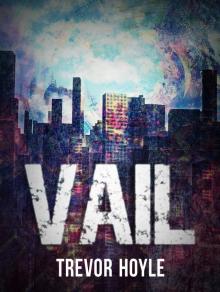 Vail
Vail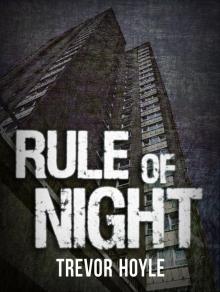 Rule of Night
Rule of Night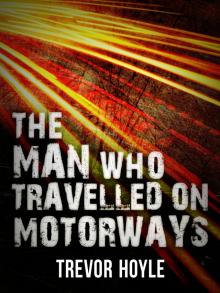 The Man Who Travelled on Motorways
The Man Who Travelled on Motorways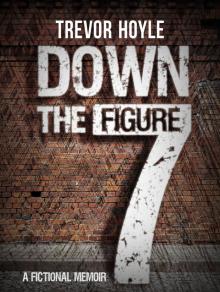 Down the Figure 7
Down the Figure 7 The Gods Look Down
The Gods Look Down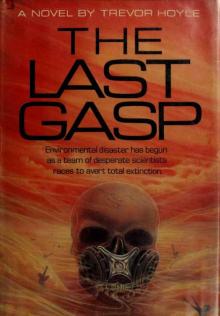 Last Gasp
Last Gasp Mirrorman
Mirrorman Seeking the Mythical Future
Seeking the Mythical Future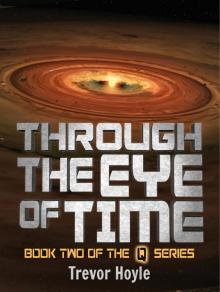 Through the Eye of Time
Through the Eye of Time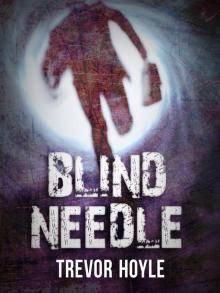 Blind Needle
Blind Needle Earth Cult
Earth Cult